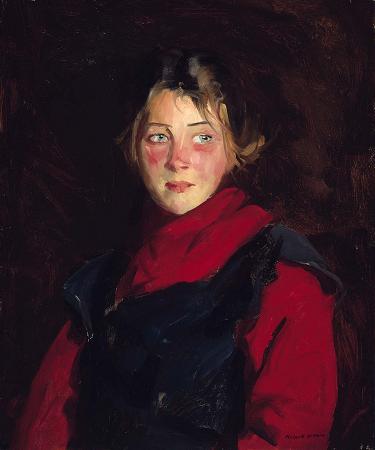Stuart Davis (1892 - 1964). Stuart Davis, was an early American modernist painter. He was well known for his jazz-influenced, proto-pop art paintings of the 1940s and 1950s, bold, brash, and colorful, as well as his Ashcan School pictures in the early years of the 20th century. With the belief that his work could influence the sociopolitical environment of America, Davis' political message was apparent in all of his pieces from the most abstract to the clearest. Contrary to most modernist artists, Davis was aware of his political objectives and allegiances and did not waver in loyalty via artwork during the course of his career. By the 1930s, Davis was already a famous American painter, but that did not save him from feeling the negative effects of the Great Depression, which led to his being one of the first artists to apply for the Federal Art Project. Under the project, Davis created some seemingly Marxist works; however, he was too independent to fully support Marxist ideals and philosophies. Despite several works that appear to reflect the class struggle, Davis' roots in American optimism is apparent throughout his lifetime. Stuart Davis was born on December 7, 1892, in Philadelphia to Edward Wyatt Davis, art editor of The Philadelphia Press, and Helen Stuart Davis, sculptor. Starting in 1909, Davis began his formal art training under Robert Henri, the leader of the Ashcan School, at the Robert Henri School of Art in New York under 1912. During this time, Davis befriended painters John Sloan, Glenn Coleman and Henry Glintenkamp. In 1913, Davis was one of the youngest painters to exhibit in the Armory Show, where he displayed five watercolor paintings in the Ashcan school style.In the show, Davis was exposed to the works of a number of artists including Vincent van Gogh, Henri Matisse, and Pablo Picasso. Davis became a committed modern artist and a major exponent of cubism and modernism in America. He spent summers painting in Gloucester, Massachusetts, and made painting trips to Havana in 1918 and New Mexico in 1923. After spending several years emulating artists in the Armory Show, Davis started moving toward a signature style with his 1919 Self-Portrait, in the collection of the Amon Carter Museum of American Art. In the 1920s he began his development into his mature style; painting abstract still lifes and landscapes. His use of contemporary subject matter such as cigarette packages and spark plug advertisements suggests a proto-pop art element to his work. Among Davis' practices was his use of previous paintings.Elements of harbor scenes he painted in Gloucester, Massachusetts can be found in a number of subsequent works. Another practice was painting series, works with similar structures, but with altered colors or added geometric embellishments, essentially creating variations on a theme. Some commentators suggest that this aspect of his work parallels his love of jazz in which a basic chord structure is improvised upon by the musicians. In 1928, he visited Paris, France for a year, where he painted street scenes. In 1929, while in Paris, he married his American girlfriend, Bessie Chosak. In the 1930s, he became increasingly politically engaged; according to Cecile Whiting, Davis' goal was to reconcile abstract art with Marxism and modern industrial society. In 1934 he joined the Artists' Union; he was later elected its President. In 1936 the American Artists' Congress elected him National Secretary. He painted murals for Federal Art Project of the Works Progress Administration that are influenced by his love of jazz. In 1932 Davis was devastated by the loss of his wife, Bessie Chosak Davis who died after complications from a botched abortion. Also in 1932 Davis executed a mural commission for Radio City Music Hall which the Rockefeller Center Art Committee named Men Without Women. According to Hilton Kramer in a 1975 piece on the work in the New York Times the artist was happy neither with the location in which the mural was placed or the title it was given In 1938 Davis married Roselle Springer and spent his late life teaching at the New York School for Social Research and at Yale University. He was represented by Edith Gregor Halpert at the Downtown Gallery in New York City. One of his last paintings, Blips and Ifs, created between 1963 and 1964, is in the collection of the Amon Carter Museum of American Art. The US Post Office in 1964 issued a stamp featuring 'Detail Study for Cliche' by Davis. Davis died of a stroke in New York on June 24, 1964, aged 71. Davis' interactions with European modernist works in 1913 had a significant impact on his growth as an artist.
more...













